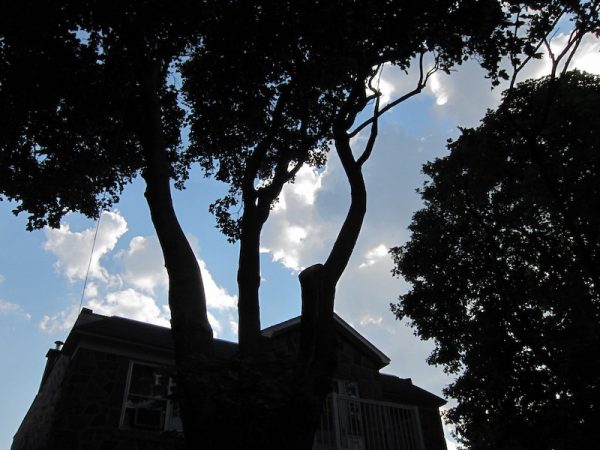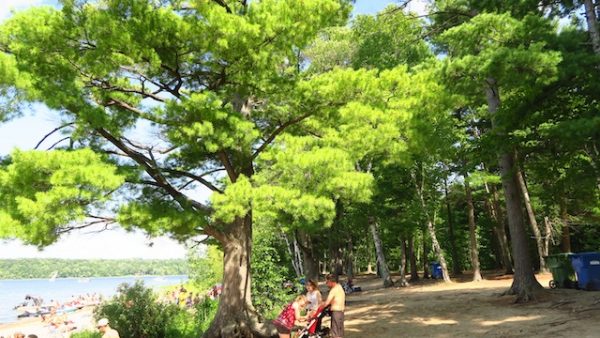“My value lies in the fact that I am a man for whom the visible world exists”
—Harry Callaghan, as quoted in the Photo Poche volume on his work.
*
Visual accommodation for the near and distant photographic subjects.
In his “The nature of photography,” Stephen Shore mentions an interesting visual perception phenomenon that happens when looking at a photograph that includes both near and distant subject matter.
It seems that, even though both are on the same plane of the physical photograph, the onlooker’s eyes will instinctively accommodate as if looking at near and distant objects in real space.
He qualifies this as the effect of pre-existing “mental models” of spatial reality in the onlooker’s mind, as well as in the mind of the photographer who needs to account for them when rendering on flat paper a part of the three-dimensional world that may have caught his/her eye.
What caught my eye …
… were the silvery clouds in a deep blue sky, at least that is what I saw as desirable photographic effect, as shown below.
In order to achieve that, I knew I had to reduce the details of foreground elements, but what would underexposing the entire image do to the sky and clouds?
Given the brightness of the sky all that the under exposition did was to make the silvery clouds stand out and the foreground turn into something of a flat black cardboard cut-out in the shape of house and trees. Nothing looked like what I could plainly see in front of me, but it certainly corresponded to my mentally previsualized image.

What caught my eye …
… was a “tree taken by light,” to use the expression coined by the poet Roethke.
That tree stood by the access to a sandy lakeshore beach, and by the entrance to a tunnel-like walkway at the edge of a forested area that came down to the lakeshore.
The photographic problem at hand, given a prime wide-angle lens, was a framing one since the natural contrast in light and colors, and the contrast of subjective depth vision accommodations required by these two parts of the framed image had to be properly balanced.
I elected to choose to wait for a human presence to anchor the viewer’s attention and allow the subjective depth perception to be sustained in a balanced way between the foliage covered tunnel like walkway on one side and a view of the lake and sky on the other.
This allowed the lake and sky part of the picture to be reduced, as was the tension in visual depth perception between it and the forested part.
As both photographer and viewer, I can attest to that since both parts of the image call for near similar subjective depth vision accommodation, thereby preserving the visual coherence of the image.

End note
The photographic lesson to be drawn here, is that any one part of a photographic image does not work without the other.
I am indebted for that lesson to Stephen Shore’s “The nature of photographs,” Phaidon, 1998…
I am also indebted to Theodore Roethke for the verse ”Light takes the Tree, but who can tell us how” taken from his poem “The waking” as published in his Words for the wind, Indiana University Press, 1963
PS The caption of the feature image is: Tree crown under winter moon.
Credit all images to Maurice Amiel
